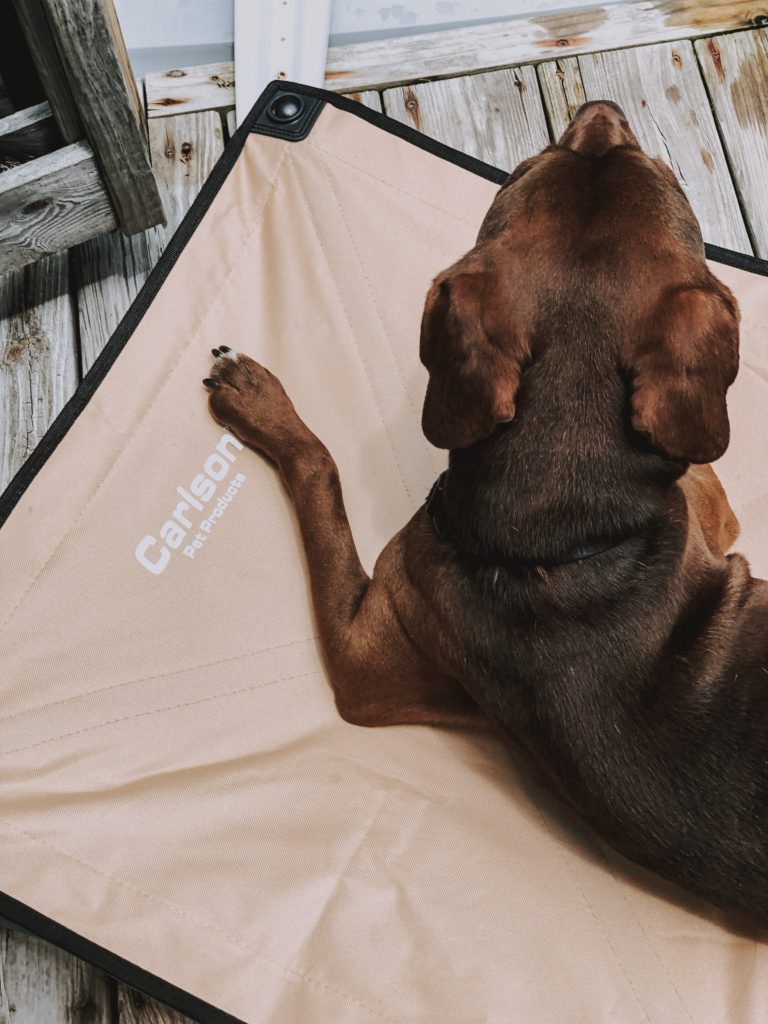Activities For Your Dog
Too Hot to Play? Try These Indoor Activities
January 11, 2023

Basic Dog Training
September 10, 2019
I’m going to let you in on a secret with dog obedience training or really any dog training methods in general.
We all have things we want to change about our dog. Heck, we all have things we want to change about ourselves.
But for unsuspecting owners, attempts to discipline their animal’s bad behaviors can quickly turn into a big screaming match that leaves everyone feeling worse for wear.
I’m going to suggest a different way of looking at things, one that will allow you to change your dog’s behaviors rather than passively reprimanding them. Stick with me for some of my favorite theories and how they can help you employ techniques that actually work for dog obedience training.
Whoa, that’s a mouthful. But it all sounds pretty good, right?
Least Intrusive, Minimally Aversive Training is a framework often shortened to LIMA. It’s less of a specific technique and more a way of thinking. It’ll help you choose which tool in your toolbox is most appropriate to use.
It means you should be asking what you want your dog to do and deciding how to effectively get there. You shouldn’t be asking what you want your dog NOT to do. Rather, LIMA reminds you to focus on an actual behavior, a goal to replace what you don’t like.
 @kelly_bove
@kelly_bove
Whereas LIMA is a framework of thought, the Humane Hierarchy is a framework of action. Keeping our goals in mind, it’s a great foundation to begin changing unwanted behaviors and working with dog obedience training methods.
Remember the food pyramid from grade school? It explained that foods on the bottom of the pyramid, like veggies, should play a big role in your daily diet. Foods at the very top, like sugar, should only make brief appearances.
The Humane Hierarchy is just like that. It’s a consecutive list of six tools to help you change your dog’s behavior. Regularly focusing on the first three? Great. Often have to resort to five or six? Maybe seek some outside help.
This gets at the heart of my original point. The first line of defense should be to create new, good behaviors. Eventually, these can replace unwanted behaviors. This leaves punishment as a last resort.
Alas, life – and punishment – happen. Maybe you need to stop your dog from running into traffic and everything goes out the window. It’s down there at number six after all, always an option.
If that’s the case, think about how you can move forward. After an incident, quickly direct your dog’s attention to something else. This turns the tables and quickly puts you back at number three so you can keep moving forward with your dog’s training.
 @west.coast.heeler.pack
@west.coast.heeler.pack
Let’s zoom in on number three in the Humane Hierarchy and look at a specific tool to help make that change happen. It’s called “successive approximations” and it’s pretty great.
Although this method of training will teach your dog new behaviors, I like to think of it as “shaping” their current behaviors.
Consider it for a minute. Instead of focusing on what you don’t want your pup to do, gradually increase the amount of time he spends doing what you want him to do.
This method is all about taking it slowly. Reward small steps until you see new behaviors emerge.
Let’s look at an example. Your dog is jumping on strangers when they enter the house.
You don’t like this behavior. However, you decide to give shaping a chance. Instead of punishing your dog and escalating the situation, you pick a new, more productive behavior to replace the old one.
Let’s say you want your dog to go lie on his bed when you ask him to. That way, when someone rings the doorbell, he’ll stay out of trouble and avoid getting the neighbors all muddy! This focuses on step three and eventually incorporates step four.
Begin by noticing small steps. Maybe your dog sits on his bed, steps toward his bed, or even looks at his bed. Reward these tiny actions with a consistent sound (a clicker works well here) and a small treat. Carlson’s cots make a great training tool for mat training and obedience training. You can shop there here.
 @jessicaanngosnel
@jessicaanngosnel
It’s all about forward progress and consistent reward. The goal is never to scold and keep sessions short and sweet. I like to use 10 minute intervals.
Your dog’s behavior will begin to change before you – or he – even realizes it! Soon you’ll have a new tool when guests come knocking and you’ll be able to continue any dog obedience training with these tools.